![]()
Logion 5: "There is nothing hidden that will not be revealed"

Shri Mataji Nirmala Devi was
Christian by birth, Hindu by
marriage, and Paraclete by duty.
"The Paraclete represents direct,
intimate divine intervention,
supporting and teaching
believers and challenging the
world, as Jesus did.” (D. Stevick
Jesus and His Own, 2011, 290)
You see, it is like the preparation of a khichdi. It is yet under preparation. So let it be cooked. You are all in it.
The quality of people being built up now is equivalent to the choicest of the handful of disciples of the past Prophets...
During the process of the revelations in Sahaja Yoga, when I still see people behave against it, I feel [...].
I continue to have such bad experiences at times but then such people leave Sahaja Yoga. This happens, but you must not get discouraged.”
THE MOTHER: Messiah-Paraclete-Ruh-Devi
Shiva Puja, Bombay, India—February 26, 1987
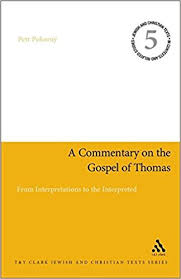
5 33,10b-14a
Jesus says:
(1) “Come to know what is in front of you
and that which is hidden from you
will become clear to you.
(2) For there is nothing hidden
that will not become manifest.”
P.Oxy. 654, 27–31 has an addition at the end, namely, “. . . not be manifest, and (nothing) buried that [will not be raised].” This reconstruction is supported by a discovery described by Henri Ch. Puech. A linen funeral band from Christian Egypt bears the inscription, “Jesus says: There is nothing buried that will not be raised.”…
Logion 5 is connected with the following saying by the one common sentence of central significance: “For there is nothing hidden that will not become revealed (manifest)”; but the two sayings set this in different contexts. To interpret logion 5 we have to understand its first sentence, that is, how can the sensual perception of “what is in front of you” make manifest “what is hidden”? This may be a short (elliptic) expression of an analogy: in the same way as we recognize the world in front of us, so it is possible to recognize the hidden truth by inner intuition.22 The other interpretation would be that a realistic recognition of the consequences of Jesus' appearance in the life of Christian communities motivates us to search for the truth that will soon manifest—for the kingdom of God (cf. 2 Cor 10:7).
The second sentence, about the hidden that will become manifest (the biblical analogy is in Mark 4:22 parr. Luke 12:2; Luke 8:17 par [Q]), means that what Jesus proclaimed, limited in space and time, has a universal future in the fact of God...
The saying is one of the small group of logia that explicitly contains an exhortation and a view into the future. In the most ancient Jesus traditions the eschatology of the future (“. . . will become clear, manifest”) meant the coming of the kingdom of God. Since the author (collector) of the Gospel of Thomas was not explicitly oriented to an apocalyptic expectation of the kingdom, he would not have produced such a saying himself. The addition about resurrection in the Greek version may, however, be a post-Easter accrual expressing the hope of general resurrection, based on the resurrection of Jesus (cf. 1 Cor 15:20ff.),…
In the New Testament we find the metaphor “image of God” for the Savior in Col 1:15 (cf. 3:10; 2 Cor 4:4). In Gnostic interpretation the “image” was a mirror of the divine nature in the human soul. Human beings could recognize themselves in the Savior. (Corp. Herm. XI, 20.”
A Commentary on the Gospel of Thomas
Petr Pokorny, T&T Clark; Reprint edition (December 22, 2011) p. 43-4
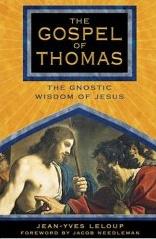
LOGION 5
Yeshua said:
Recognize what is in front of you,
and what is hidden from you will be reveled.
There is nothing hidden that will not be revealed.
(CF. MATT 4:22; 10:26; Luke 8:17, 12:2)
Consider this logion from the Gospel of Philip, also found at Nag Hammadi, which develops this theme further:
It is impossible for anyone to see the everlasting reality and not become like it.
The Truth is not realized like truth in this world:
Those who see the sky, the earth, or anything that exists, do not become what they see.
But when you see something in this other space,
you become it.
If you know the Breath, you are the Breath.
If you know the Christ, you become the Christ.
If you see the Father, you are the Father.[3]
Jean-Yves Leloup, The Gospel of Thomas
Inner Traditions (2005) pp. 73-74
3. [See Jean-Yves Leloup, The Gospel of Philip (Rochester, Vt.: Inner Traditions, 2004). Cf. also the famous Sanskrit proverb, from the Advaita tradition, Tat tvam asi, "Thou art that.”-Trans.}
Tat Tvam Asi means "That thou art," which is one of the Mahavakyas in Vedantic Sanatana Dharma. The meaning of this phrase is that the self in its original state is partially or wholly identifiable with the ultimate reality which is the origin of all phenomenon. Tat Tvam Asi Mahavakya is stated in such a manner as if one person is speaking to the other, in a direct speech.”That is what you are!"Is the correct form of punctuation when referring to Brahman. The person speaking in this Mahavakya is the teacher and the person being spoken to is considered as the student.
When the teacher has explained to the students all of the Mahavakyas, that the student has already reflected on these, and that the student has started to gain some sense of the meaning of the oneness called Brahman. The Guru explains his student that Brahman is that oneness, who resides at the deepest level of one's being. The mundane accept the identity of the roles in their work area or in their families, such as father or mother, sister or brother, son or daughter. Sometimes, eventually, the common people believe that who they are, is their personality character that have developed through their way of living. If the common men forget their true nature, they come underneath all of the relative identities. The laymen continue their duties, holding identities loosely. The realisation of this Mahavakya, Tat Tvam Asi, leads the mundane to see that the relative identities are not who they actually present. It does not mean that people drop their duties in the world, or stop acting in service of other people because of this realization. Rather, with time any person becomes more liberal to hold those identities loosely, while increasingly being able to act in the loving service of others, independent of attachment to the innate false identities.
Tat Tvam asi Mahavakya should be practiced in soliloquy pattern. The Yogi talks to him in profound concentration inward, possibly towards the heart centre. The Yogi has to say himself that "That is who you are!" The Yogi has to even point his index finger at his own chest, the place from where he experience," I am.”As he holds in awareness the essence of the truth that this Brahman, this oneness, is who the person actually is and observe how the person can gently let go of the false identities, seeing that they are only temporary and relatively him.
When reflecting on the other Mahavakyas, such as Brahman is the supreme knowledge, then shift the observation from that truth, directing attention to one's own inner being and saying, "Tat Tvam asi; That you are!"The Yogi should be alert enough to allow his inner feeling to understand that comes from this Mahavakya and realizes his spiritual nature, rather than his more surface level of mental or physical identity.
https://www.indianetzone.com/38/tat_tvam_asi.htm
Web. September 12, 2011
“In the whole world...there is no study...so beneficial and so elevating as that of the Upanishads. They are products of the highest wisdom. They are destined sooner or later to become the faith of the people.”
Schopenhauer
"We have to remember that the highest religion of the Upanishads, which insists on meditation and morality and worship of God in spirit and in truth, is not encumbered by such traditional dogmas and miracles as still hang upon the skirts of other religions. Its central principle that there is one supreme reality that manifests itself in the universe is not asserted as a dogma. It is the ultimate truth at which it is possible for human understanding to arrive. The progress of science and philosophy does not conflict with it but only confirms it.”
S. Radhakrishnan
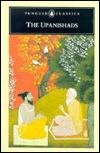
The Upanishads
“One of the messages of the Upanishads is that the Spirit can only be known through union with him, and not through mere learning. And can any amount of learning make us feel love, or see beauty or hear the 'unheard melodies'. Some have only seen the variety of thought in the Upanishads, not their underlying unity. To them the words in the sacred texts might be applied: "Who sees variety and not the unity wanders on from death to death.”
The spirit of the Upanishads is the Spirit of the Universe. Brahman, God himself, is their underlying spirit. The Christians must feel that Brahman is God, and the Hindu must feel that God is Brahman. Unless a feeling of reverence independent of the barriers of names can be felt for the ineffable, the sayings of the Upanishads is true: "Words are weariness," the same idea expressed by the prophet that"Of making many books there is no end.”
The Holy Spirit may be the nearest translation of Brahman in Christian language. Whilst God the Father and God the Son are in the foreground of the mind of many Christians, the Holy Spirit seems to receive less adoration. And in India the Brahman of the Upanishads is not as popular as Siva, Vishnu or Krishna. Even Brahma, the manifestation of Brahman as creator, and not to be confused with him, is not living in the daily devotions of the Hindu, as are the other two gods of the trinity, Siva and Vishnu. The Upanishads doctrine is not a religion of the many; but rather the Spirit behind all religions in their central theme repeated in such a wonderful variety of ways.
Brahman in the Universe, God in his transcendence and immanence is also the Spirit of man, the self in every one and in all, Atman. Thus the momentous statement is made in the Upanishads that God must not be sought as something far away, separate from us, but rather as the very inmost of us, as the higher Self in us above the limitations of our little self. Thus when the sage of the Upanishads is pressed for a definition of God, he remains silent, meaning that God is silence. When asked again to express God in words, he says "Neti, neti," "Not his, not this"; but when pressed for a positive explanation he utters the sublimely simple words 'TAT TWAM ASI,' 'Thou art That.'”
Juan Mascaro, The Upanishads Synopsis
The Upanishads, the earliest of which were composed in Sanskrit between 800 and 400 bce by sages and poets, form part of the Vedas - the sacred and ancient scriptures that are the basis of the Hindu religion. Each Upanishad, or lesson, takes up a theme ranging from the attainment of spiritual bliss to karma and rebirth, and collectively they are meditations on life, death and immortality. The essence of their teachings is that truth can by reached by faith rather than by thought, and that the spirit of God is within each of us - we need not fear death as we carry within us the promise of eternal life.
A Different Take on Early Christianity 6 Mar 2012
By Robert Lebling - Published on Amazon.com
In AD 397 at the Council of Carthage, the bishops of the Christian Church, under the direction of the Emperor Constantine, compiled the collection of scriptures we call the New Testament. This collection consisted of gospels, epistles and other writings related to the life of Jesus Christ and his Apostles. Many works did not make the cut at Carthage, either because they were considered spurious or because they did not meet the doctrinal requirements of the Roman Church.
The rejected works became known as the Apocrypha. The Church did its best to root out and destroy these writings, but a number of them survived. One of the survivors is the Gospel of Thomas, one of 53 ancient parchments known as the Nag Hammadi library, discovered in the desert of upper Egypt in 1945, which have revolutionized the study of early Christianity.
The Gospel of Thomas is not a narrative of the life of Jesus, but rather a collection of his reputed sayings and aphorisms. The document was first translated into English from Sahidic Coptic, an Egyptian tongue that succeeded the language of the Pharaohs, in 1959. The Apostle Didymus Judas Thomas is perhaps best known to us today as"Doubting Thomas," because, as the story goes, he refused to believe that Jesus had risen from the dead until he put his hand in his lord's wounds.
In this edition, French scholar Jean-Yves Leloup has given us a new translation of the Gospel of Thomas, alongside the original Coptic text, as well as a commentary on each of the 114 logia, or sayings, of Jesus (here called by his Aramaic name Yeshua) that were collected by Thomas.
Here, for example, is one of the shorter logia (singular: logion):
Logion 82
Yeshua said:
Whoever is near to me
Is near to the fire.
Whoever is far from me
Is far from the Kingdom.
This particular saying demonstrates well that the Gospel of Thomas is both independent of the canonical New Testament and parallel to it. The saying was quoted by a number of early Christian writers, including Origen.
Interestingly, in the Gospel of Thomas (Logion 12), Jesus names his brother James, and not Peter, as Christ's successor on earth. He tells his disciples: "Go to James the Just: All that concerns heaven and earth is his domain.”There was in fact a Jerusalem-based Christian church under James's leadership, which eventually lost out to, and was eliminated by, the Rome-based church of Peter and Paul.
The Gospel of Thomas, like the rest of the Nag Hammadi parchments, is an example of Gnostic Christianity, a strain of belief that focuses on the quest for self-knowledge, and on becoming one with the universe and God. This approach was considered heresy by the Roman Church.
Leloup's commentaries focus on these reputed aphorisms of Jesus as examples of Gnostic wisdom, compares them with canonical New Testament materials and presents them as nuggets for personal meditation.
Even those who do not choose to use the Gospel of Thomas for their own self-enlightenment will find this material fascinating. The sayings, presented by Thomas as the actual words of Jesus, offer a different and refreshing glimpse into the early Christian world.
[A version of this review appeared in Mysteries Magazine in 2005.]
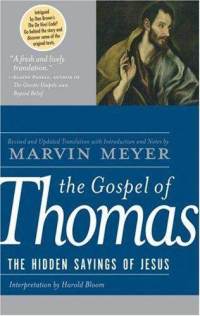
5. Jesus says, “Know what is in front of your face, and what is hidden from you will be disclosed to you. For there is nothing hidden that will not be revealed.”
5.“Know what is in front of your face”: A nearly identical version of this saying is given in Manichaean Kephalaia LXV 163,26-29, also as a saying of Jesus: “Understand what is in front of your face, and then what is hidden from you will be disclosed to you.”
“For there is nothing hidden”: Compare Mark 4:22; Luke 8:17; Matthew 10:26 (Q); Luke 12:2 (Q). This portion of the saying is also found in Gospel of Thomas saying 6:5. Papyrus Oxyrhynchus 654.31 adds “And nothing buried that [will not be raised].” This additional statement has also been preserved as a saying of Jesus on a Christian burial shroud from Oxyrhynchus, dated to the fifth or sixth century.
The Gospel of Thomas: The Hidden Sayings of Jesus
Marvin Meyer, HarperOne; 2nd edition (October 9, 1992) p. 21, 81
P. Oxy 654.21-27 [Coptic Saying 5]
Jesus says, “[Know what is before] your face, and [what is hidden] from you will be disclosed [to you. For] there [is nothing] hidden that [will] not [become] apparent, and nothing buried that [will not be raised].”
The Gospel of Thomas: The Hidden Sayings of Jesus
Marvin Meyer, HarperOne; 2nd edition (October 9, 1992) p. 69
“Several passages by early Church writers that have been long known can now be identified as quotations from the Gospel of Thomas, or at least from an equivalent tradition. In addition, portions of the Gospel were discovered at the turn of this century at Oxyrhyncus, the site of another ancient monastery not far to the north along the Nile. They were written in Greek, and are thought to be dated around 200 A.D. These relate to only 18 of the 115 logia, and are extremely fragmentary; it is now possible to fill out the broken places. Comparisons show, in the first place, that the translation into Coptic was done skillfully; secondly, the only difference of any substance is that 'Kingdom' is expanded to 'Kingdom of God', and in logion 5 a phrase is added at the end that has been reconstructed as — '" and buried that [will] not [be raised up (?)]' which, it is suggested, is a reference to the resurrection. The opinion of experts seem to be divided whether both these represent additions to that version or deletion from ours.”
Hugh McGregor Ross, Thirty Essays on the Gospel of Thomas
Element Books (1990) pp. 9-10
“The Gospel of Thomas, containing the sayings of the"living" Jesus and found at Nag Hammadi (Codex II, 2, which is the second document in the second book), is a complete and well-preserved papyrus manuscript written in Egyptian Coptic script that dates to about A.D. 340. There are earlier Greek fragments that date to about A.D. 200. The Coptic version, scholars believe, was translated from the original Greek. Three other fragments of this gospel were previously discovered in 1898 at Oxyrhynchus, Egypt.”
Wisdom Interpretation of Jesus' Sayings by Meera Lester
https://www.netplaces.com/gnostic-gospels/the-gospel-of-thomas/wisdom-interpretation-of-jesus-sayings.htm
Web. September 04, 2011
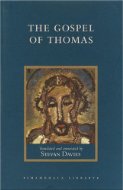
5 Jesus said: Recognize what is right in front of you, and that which is hidden from you will be revealed to you. Nothing hidden will fail to be displayed.
If what is hidden is the Kingdom, as saying 3 seems to indicate, its location is here in the present world. The Kingdom is everywhere now. In their separate ways, sayings 5 and 3 both deny that one's quest should lead one away from one's present circumstances. This contrasts strikingly with the more familiar early Christian opinion that the Kingdom is an event to be anticipated in the future or that the Kingdom is presently somewhere other than here. It also contrasts with the tendency of mystical speculations to create a complex system of truths that are difficult to comprehend. Thomas declares that it is all ever obvious and easy to comprehend, once one has found the key of seeing things in the new way Jesus recommends.
Stevan Davies & Andrew Harvey, Gospel of Thomas Annotated and Explained
Reviews, Skylights Path (2006) pp. 6-7
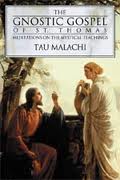
VERSE 5
Jesus said, “Recognize what is in your sight, and that which is hidden from you will become plain to you. For there is nothing hidden which will not become manifest.”
Now there i s a greater mystery revealed in this saying, for the kingdom of heaven is not merely something experienced in the afterlife states, nor is the world of Supernal Light something distant and removed from you. Matter and Spirit are not separate. Mundane reality and sacred reality are one and the same reality-truth-continuum. This very life you are living is a Divine drama, the play of a Living God. The whole of life is sacred. The whole of life is a Divine revelation, God revealing itself. The mystery is revealed in plain sight—in life itself, for those who have the awareness to perceive"
Everywhere is a gate to heaven. The whole of Creation is the house or body of God, and God dwells in it and reveals itself through it. God is speaking through you and me, through everyone and everything. All is the self-expression of God. Thus, rightly, God has been called the Almighty Living God, for God lives in Creation, within, yet ever beyond it.
“For there is nothing hidden that will not become manifest"—the Divine potential will always tend to manifest itself. The purpose of God will always play itself out and ultimately be fulfilled. God will reveal itself in full. God is revealing itself all of the time.
Much more could be said, but this is enough. You will discover more of the Divine in life, your ordinary daily life, and the world, than in a book. Look and see what is in your sight, and what is hidden will be revealed!”
Tau Malachi, The Gnostic Gospel of St. Thomas
Llewellyn Publications (June 8, 2004) pp. 14-17
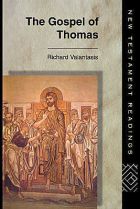
Logion 5: “These sayings are not esoteric, they are available to anyone willing to begin to find their interpretation.”
Jesus said, “Know what is in front of your face, and what is hidden from you will be disclosed to you. For there is nothing hidden that won't be revealed.”
Again, the rhetorical organization of the sayings places the particular before the principle. The injunction simply advises the seekers to perceive (if not to understand) what presents itself to them. Jesus enjoins the seeker to be fully present to the moment in such a way as to understand and comprehend it immediately. The orientation of the seeker ought to be neither to the past, nor to the future, but toward the present alone. The statement does not really talk about any ontological status so as to imply that those who have knowledge understand the present, but relates a simple truth that good perception and understanding begin with what appears to the senses, and therefore true knowledge begins in a clear perception and understanding of the present moment.
The knowledge of the moment, of immediate perception and understanding, forms the basis for revelation. There is a play here between knowing the present things and receiving the disclosure of hidden things. The injunction discounts the search for hidden things, by assuring that those who see what is before them will also have the hidden things disclosed to them. The knowledge here does not revolve about secret, or hidden, revelations, but rather about immediate perception and understanding that will guide the way to revelation and disclosure. Things that are hidden will be disclosed to those who understand what the senses present.
The principle which commends this statement relates that"There is nothing hidden that won't be revealed.”The statement presents a very positive perspective on the hidden things, without hint of paranoia, or of cosmic withholding of knowledge: hidden things will be revealed. In its context, that disclosure will only happen to those who keep their eyes open, who see what presents itself to sight; it does not seem to apply generally, but specifically to those addressed in the example.
The strategy of emphasizing the present and visible over the hidden and invisible argues against an esoteric provenance for these sayings. The"hidden things"And other revelations depend not upon some secret knowledge or process, but rather upon a simple understanding of the nature of apparent reality. Knowledge of visible reality guarantees the disclosure of hidden realities and revelations of hidden things. An esoteric system would begin with the opposite, with some key to secret knowledge that must first be discovered in order to unlock the hidden and mysterious revelations. Such an esoteric system finds no basis in this saying that actually suggests the opposite: knowledge of the visible leads to the revelation of the invisible. These sayings are not esoteric, they are available to anyone willing to begin to find their interpretation; those who find the interpretation are not members of a secret society with the knowledge available only to themselves, but rather they are those whose different understanding of themselves, society, and the world enable them to live in the world with new understanding.”
Richard Valantasis, The Gospel of Thomas
Routledge; 1 edition (June 27, 1997) pp. 61-2
P. Oxy 654.27-31 [Coptic Saying 5]
Jesus says, “[Know what is in front of] your face, and [what is hidden] from you will be disclosed [to you. For there is nothing] hidden that [wo]n't [become] exposed, and
“This saying links knowledge and revelation in such a way that knowledge precedes revelation. For the seekers knowledge of the visible leads to revelation of the invisible and hidden. Knowledge leads to revelation and disclosure, so that the seekers in these sayings understand both apparent and revealed realities. This saying at once posits the existence of hidden, undisclosed things as well as visible and apparent ones: it speaks of both exoteric and esoteric understanding. For the one who has entered into the process of interpretation of these sayings, all the hidden things will be made manifest, but presumably for others, for those who have not entered into this process, they will remain hidden and undisclosed.
In a strategy common to collections of sayings, the two final verses of the saying have been attached by linking common words: the "nothing hidden"of the second verse attaches to the"What is hidden" of the first, while the"nothing buried"Attaches to the"nothing hidden.”The saying, then, forms an interlocking connection of three elements which develops a constellation of gradually less related themes. The second verse appears to provide a summary of the first saying, but that summary does not have anything to say about knowledge; it speaks only of revelation. The linking of the verses has caused the meaning to shift to a general statement that everything hidden will be disclosed. The final verse has nothing in common with the previous two, except the link that the word"nothing" provides. This last saying (that nothing buried will not be raised) makes a general statement parallel to the form of the previous statement, but now extending that disclosure about revelation to include burial and resurrection.
The linking of these sayings in this fashion creates a connection larger than any one of the sayings. In this saying knowledge, revelation, and resurrection become mirrors of one another in a narrative created by their combination. The sayings guides the seeker to understand that knowledge leads to revelation, because everything will be disclosed to the one who knows the invisible, and that it leads to resurrection, because the dead body which was made invisible by burial will become visible at the resurrection. A simple statement about paying attention to apparent things has emerged as a way to discuss a performative theology of revelation and of resurrection.”
Richard Valantasis, The Gospel of Thomas
Routledge; 1 edition (June 27, 1997) p. 35-6
“Thus through hearing about, reflecting upon, and ascertaining the Self by the Self, one should also, through intense meditation, realize that I am in essence the Self... By this meditation, O King, the noble person will perceive me directly and then merge into my own essence since we two are one. By practicing this yoga, one realizes me as the supreme Self. In that instant, ignorance and its effects all perish.”
The Divine Mother (Devi Gita 4.40;49-50)

“Now there are many difficulties in spreading Sahaja Yoga — there were many, many more before, slowly these are coming down. Naturally it is much better than at the time of Thomas because he had to hide his treatise to save it from others. He thought a day will come when there will be Resurrection time, then this treatise would be revealed. Imagine, only 48 years back, now it would be around 53 or 50 years back, it was discovered.”
THE MOTHER: Messiah-Paraclete-Ruh
Shri Shakti Mahakali Puja, Bangalore, India—December 9, 1991
“But Bible is a book which is being compiled by various people at different places at different stages, and all this was revealed to them by the unconscious. All the knowledge that you find in the Bible was revealed to them by the unconscious, and they could not actually understand the full text of it. Whatever they understood or gathered, they put it down. Part of it was lost because it was not immediately recorded, and also because the original Bible itself was lost, so all explanations, all the things were left behind and that's how people have a very good loophole to make whatever they feel like about all the great words that are in the Bible.”
THE MOTHER: Messiah-Paraclete-Ruh
Heart and Omkara, London, UK—February 1, 1977
“It’s tremendous, the way the grace has come on this Earth. Really it has descended...
I must tell you about this one. It’s very important. In India, you see, every married woman has to wear it [bindi]. It’s a sign of a married lady, you see. It’s something like your ring or something outwardly, but inwardly it’s very deep. It is placed at a point where this is the window of the center of Christ. And you can say this is the symbol of his blood. Looking at this point you can get thoughtlessly aware.
Looking at this point you can get thoughtlessly aware because Christ in you can be awakened. When you look at this point, Christ is awakened in you. And Christ came on this Earth to suck in our ego and superego, means the sin, so-called sin. He is the one who has sucked, who has the power to suck our sins, if He is awakened. But He has to be awakened. Just not by saying that we're Christians. He said, ‘You will be calling Me Christ, and Christ I won't recognize.’ He is to be awakened within us.”
THE MOTHER: Messiah-Paraclete-Ruh
Public Program, Finding the Truth, Norwich, UK—July 4, 1981
THE APOCALYPSE OF THE SPIRIT-PARACLETE
The fulfillment of the promised divine eschatological instruction

“The Paraclete will come (15:26; 16:7, 8, 13) as Jesus has come into the world (5:43; 16:28; 18:37)... The Paraclete will take the things of Christ (the things that are mine, ek tou emou) and declare them (16:14-15). Bishop Fison describes the humility of the Spirit, 'The true Holy Spirit of God does not advertise Herself: She effaces Herself and advertises Jesus.' ...
It is by the outgoing activity of the Spirit that the divine life communicates itself in and to the creation. The Spirit is God-in-relations. The Paraclete is the divine self-expression which will be and abide with you, and be in you (14:16-17). The Spirit's work is described in terms of utterance: teach you, didasko (14:26), remind you, hypomimnesko (14:26), testify, martyro (15:26), prove wrong, elencho (16:8), guide into truth, hodego (16:13), speak, laleo (16:13, twice), declare, anangello (16:13, 14, 15). The johannine terms describe verbal actions which intend a response in others who will receive (lambano), see (theoreo), or know (ginosko) the Spirit. Such speech-terms link the Spirit with the divine Word. The Spirit's initiatives imply God's personal engagement with humanity. The Spirit comes to be with others; the teaching Spirit implies a community of learners; forgetful persons need a prompter to remind them; one testifies expecting heed to be paid; one speaks and declares in order to be heard. The articulate Spirit is the correlative of the listening, Spirit-informed community.
The final Paraclete passage closes with a threefold repetition of the verb she will declare (anangello), 16:13-15. The Spirit will declare the things that are to come (v.13), and she will declare what is Christ's (vv. 14, 15). The things of Christ are a message that must be heralded...
The intention of the Spirit of truth is the restoration of an alienated, deceived humanity... The teaching role of the Paraclete tends to be remembered as a major emphasis of the Farewell Discourses, yet only 14:26 says She will teach you all things. (Teaching is, however, implied when 16:13-15 says that the Spirit will guide you into all truth, and will speak and declare.) Franz Mussner remarks that the word used in 14:26, didaskein, "means literally 'teach, instruct,' but in John it nearly always means to reveal.” (Stevick 2011, 292-7)
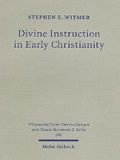
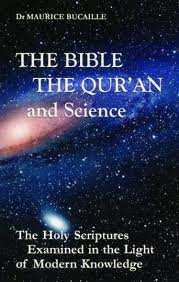
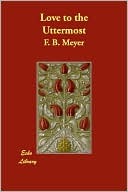
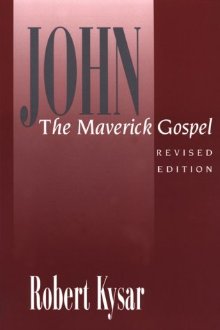
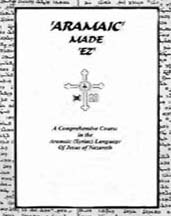
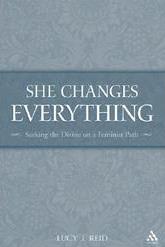
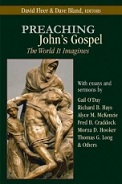

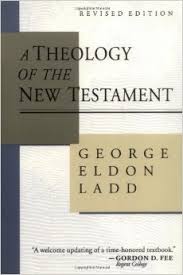
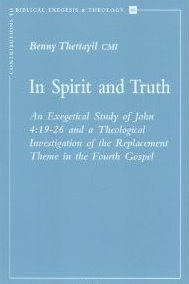


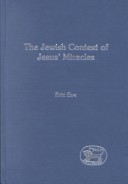
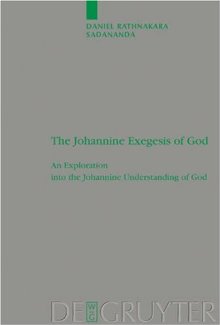

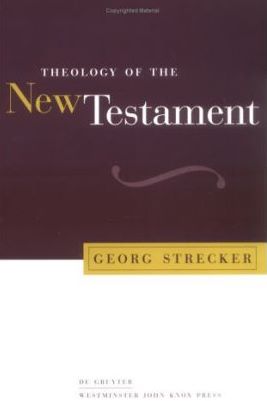

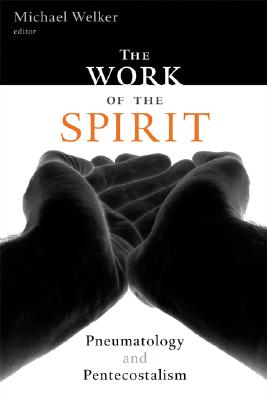
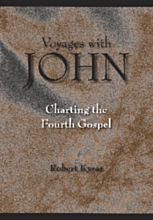


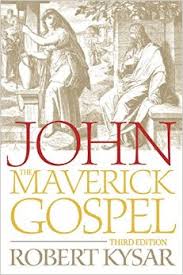
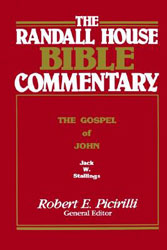

Stephen E. Witmer, Divine instruction in Early Christianity
“Jesus therefore predicts that God will later send a human being to Earth to take up the role defined by John .i.e. to be a prophet who hears God's words and repeats his message to man.”
M. Bucaille, The Bible, the Qur'n, and Science
“And when Jesus foreannounced another Comforter, He must have intended a Person as distinct and helpful as He had been.”
F. B. Meyer, Love to the Utmost
“The Paraclete has a twofold function: to communicate Christ to believers and, to put the world on trial.”
Robert Kysar, John The Meverick Gospel
“But She—the Spirit, the Paraclete...—will teach you everything.”
Danny Mahar, Aramaic Made EZ)
“Grammatical nonsense but evidence of the theological desire to defeminize the Divine.”
Lucy Reid, She Changes Everything
“The functions of the Paraclete spelled out in verses 13-15... are all acts of open and bold speaking in the highest degree.”
David Fleer, Preaching John's Gospel
“The reaction of the world to the Paraclete will be much the same as the world's reaction was to Jesus.”
Berard L. Marthaler, The Creed: The Apostolic Faith in Contemporary Theology
Bultmann calls the “coming of the Redeemer an 'eschatological event,' 'the turning-point of the ages.”
G. Ladd, A Theology of the New Testament
“The Paraclete equated with the Holy Spirit, is the only mediator of the word of the exalted Christ.”
Benny Thettayil, In Spirit and Truth
“The divine Paraclete, and no lessor agency, must show the world how wrong it was about him who was in the right.”
Daniel B. Stevick , Jesus and His Own: A Commentary on John 13-17
Stephen Smalley asserts that “The Spirit-Paraclete ... in John's Gospel is understood as personal, indeed, as a person.”
Marianne Thompson, The God of the Gospel of John
“The Messiah will come and the great age of salvation will dawn (for the pious).”
Eric Eve, The Jewish context of Jesus' Miracles
“The remembrance is to relive and re-enact the Christ event, to bring about new eschatological decision in time and space.”
Daniel Rathnakara Sadananda, The Johannine Exegesis of God
“The Spirit acts in such an international situation as the revealer of 'judgment' on the powers that rule the world.”
Michael Welker, God the Spirit
The Paraclete's “Appearance means that sin, righteousness, and judgment will be revealed.”
Georg Strecker, Theology of the New Testament
“While the Spirit-Paraclete is the true broker, the brokers they rely on are impostors.”
T. G. Brown, Spirit in the writings of John
“The pneumatological activity ... of the Paraclete ... may most helpfully be considered in terms of the salvific working of the hidden Spirit.”
Michael Welker, The work of the Spirit
“The pneuma is the peculiar power by which the word becomes the words of eternal life.”
Robert Kysar, Voyages with John
“The gift of peace, therefore, is intimately associated with the gift of the Spirit-Paraclete.”
Francis J. Moloney, The Gospel of John
“This utopian hope, even when modestly expressed, links Jesus and the prophets to a much wider history of human longing.”
Harvey Cox, The Future of Faith
“Because of the presence of the Paraclete in the life of the believer, the blessings of the end-times—the eschaton—are already present.”
Robert Kysar, John
“They are going, by the Holy Spirit's power, to be part of the greatest miracle of all, bringing men to salvation.”
R. Picirilli, The Randall House Bible Commentary
“The Kingdom of God stands as a comprehensive term for all that the messianic salvation included... is something to be sought here and now (Mt. 6:33) and to be received as children receive a gift (Mk. 10:15 = Lk. 18:16-17).”
G. Ladd, A Theology of the New Testament
“But today is the day I declare that I am the one who has to save the humanity. I declare I am the one who is Adishakti, who is the Mother of all the Mothers, who is the Primordial Mother, the Shakti, the desire of God, who has incarnated on this Earth to give its meaning to itself; to this creation, to human beings and I am sure through My Love and patience and My powers I am going to achieve it.
I was the one who was born again and again. But now in my complete form and complete powers I have come on this Earth not only for salvation of human beings, not only for their emancipation, but for granting them the Kingdom of Heaven, the joy, the bliss that your Father wants to bestow upon you.”
THE MOTHER: Messiah-Paraclete-Ruh
London, UK—December 2, 1979
“I am the one about which Christ has talked... I am the Holy Spirit who has incarnated on this Earth for your realization.”
THE MOTHER: Messiah-Paraclete-Ruh
New York, USA—September 30, 1981
“Tell all the nations and tell all the people all over the Great Message that the Time of Resurrection is here. Now, at this time, and that you are capable of doing it.”
THE MOTHER: Messiah-Paraclete-Ruh
Cowley Manor Seminar, UK—July 31, 1982
Guest: “Hello Mother.”
Shri Mataji: “Yes.”
Guest: “I wanted to know, is the Cool Breeze (Pneuma) that you have spoken about, you feel on the hands the Cool Wind of the Holy Spirit, as spoken about in the Bible?”
Shri Mataji: “Yes. Yes, yes, same thing, same thing. You have done the good job now, I must say.”
Interviewer: “Is it the Holy Spirit?”
Shri Mataji: “Yes, of course, is the Holy Spirit.”
Guest: “Aha... I am feeling it now on my hand through the [not clear]”
Shri Mataji: “It’s good.”
Interviewer: “Did you want to say anything more than that?”
Guest: “No, I just... That’s all I wanted to know because I...”
Shri Mataji: “Because you are thoughtless now. Enjoy yourself.”
Guest: “Thank you.”
THE MOTHER: Messiah-Paraclete-Ruh-Devi
Talkback Radio 2UE, Sydney, Australia—March 31, 1981
Second Guest: “I just want to ask Mother about a quotation from the Bible.”
Interviewer: “Yes, what’s that?”
Guest: “It says, ‘But the comfort of the Holy Spirit that the Father will send in My name would teach you all things.’ I would like to ask Her about that.”
Interviewer: “Could you just repeat the quotation again?”
Guest: “But the Comforter, the Holy Spirit, whom the Father will send in My name, will teach you all things.”
Interviewer: “And that’s from where?”
Guest: “John chapter 14, verse 26.”
Shri Mataji: “I think you should take your realization and then you will know the answer to it. Because, logically if it points out to one person, then you have to reach the conclusion, isn’t it? That’s a logical way of looking at things. But I am not going to say anything or claim anything. It is better you people find out yourself.”
Interviewer: “Does that answer your question?”
Guest: “Is the, is the Comforter on the Earth at the present time? Has the Comforter incarnated? Mataji should be able to tell us this because She said that through these vibrations on Her hands, She ...”
Shri Mataji: “Yes, She is very much here and She’s talking to you now. Can you believe that?”
Guest: “Well, I feel something cool [Pneuma/Prana/Chi] on my hand. Is that some indication of the ...?”
Shri Mataji: “Yes, very much so. So that’s the proof of the thing. You’ve already started feeling it in your hands.”
Guest: “Can I?”
Shri Mataji: “Ask the question, ‘Mother, are you the Comforter?’”
Guest: “Mother, are you the Comforter?”
Shri Mataji: “Ask it thrice.”
Guest: “Mother, are you the Comforter?”
Shri Mataji: “Again.”
Guest: “Mother, are you the Comforter?”
Shri Mataji: “Now, what do you get?”
Guest: “Oh, I feel this kind of cool tingling [Pneuma/Prana/Chi] passing all through my body.”
Shri Mataji: “That’s the answer now.”
THE MOTHER: Messiah-Paraclete-Ruh-Devi
Talkback Radio 2UE, Sydney, Australia—March 31, 1981

“The Paraclete and the disciples (vv. 25-26): The theme of departure (cf. vv. 1-6; vv. 18-24) returns. There are two "times" in the experience of the disciples: the now as Jesus speaks to them (v. 25) and the future time when the Paraclete, the Holy Spirit, sent by the Father in the name of Jesus, will be with them (v. 26). The Paraclete will replace Jesus' physical presence, teaching them all things and recalling for them everything he has said (v. 26). As Jesus is the Sent One of the Father (cf. 4:34; 5:23; 24, 30, 37; 6:38-40; 7:16; 8:16, 18, 26; 12:44-49), so is the Paraclete sent by the Father. The mission and purpose of the former Paraclete, Jesus (cf. 14:13-14), who speaks and teaches "his own" will continue into the mission and purpose of the "other Paraclete" (cf. v. 16) who teaches and brings back the memory of all that Jesus has said. The time of Jesus is intimately linked with the time after Jesus, and the accepted meaning of a departure has been undermined. The inability of the disciples to understand the words and deeds of Jesus will be overcome as they "remember" what he had said (cf. 2:22) and what had been written of him and done to him (cf. 12:16). The "remembering" will be the fruit of the presence of the Paraclete with the disciples in the in-between-time. In v. 16 Jesus focused on the inability of the world to know the Paraclete, but in v. 26 the gift of the Paraclete to "his own" is developed. As Jesus was with the disciples (v. 25), so will the Paraclete be with the disciples in the midst of hostility and rejection (v. 16). As the story has insisted that Jesus' teaching has revealed God to his disciples, so will the Paraclete recall and continue Jesus' revelation of God to the disciples (v. 26).” (Harrington 1998, 412)
“This is the transformation that has worked, of which Christ has talked, Mohammed Sahib has talked, everybody has talked about this particular time when people will get transformed.”
THE MOTHER: Messiah-Paraclete-Ruh
Chistmas Puja, Ganapatipule, India—25 December 1997
“The Resurrection of Christ has to now be collective Resurrection. This is what is Mahayoga. Has to be the collective Resurrection.”
THE MOTHER: Messiah-Paraclete-Ruh
Easter Puja, London, UK—11 April 1982
“Today, Sahaja Yaga has reached the state of Mahayoga, which is en-masse evolution manifested through it. It is this day’s Yuga Dharma. It is the way the Last Judgment is taking place. Announce it to all the seekers of truth, to all the nations of the world, so that nobody misses the blessings of the divine to achieve their meaning, their absolute, their Spirit.”
THE MOTHER: Messiah-Paraclete-Ruh
MAHA AVATAR, ISSUE 1, JUL-SEP 1980
“The main thing that one has to understand is that the time has come for you to get all that is promised in the scriptures, not only in the Bible but all all the scriptures of the world. The time has come today that you have to become a Christian, a Brahmin, a Pir, through your Kundalini awakening only. There is no other way. And that your Last Judgment is also now.”
THE MOTHER: Messiah-Paraclete-Ruh
“You see, the Holy Ghost is the Mother. When they say about the Holy Ghost, She is the Mother... Now, the principle of Mother is in every, every scripture — has to be there. Now, the Mother's character is that She is the one who is the Womb, She is the one who is the Mother Earth, and She is the one who nourishes you. She nourishes us. You know that. And this Feminine thing in every human being resides as this Kundalini.”
THE MOTHER: Messiah-Paraclete-Ruh-Devi
Radio Interview, Santa Cruz, USA—1 October 1983
“But there is a Primordial Mother which was accepted by all the religions; even the Jews had it... In India, this is called as Adi Shakti. In every religion they had this Mother who was the Primordial Mother.”
THE MOTHER: Messiah-Paraclete-Ruh-Devi
TV Interview, Los Angeles, USA—11 October 1993

Total number of Recorded Talks 3058, Public Programs 1178, Pujas 651 and Other (private conversations) 1249
“What are they awaiting but for the Hour to come upon them suddenly? Its Signs have already come. What good will their Reminder be to them when it does arrive?” (Qur'n, 47:18) “As the above verse indicates, God has revealed some of Doomsday's signs in the Qur'n. In Surat az-Zukhruf 43:61, God informs us that 'He [Jesus] is a Sign of the Hour. Have no doubt about it...' Thus we can say, based particularly on Islamic sources but also on the Old Testament and the New Testament, that we are living in the End Times.” Harun Yahya
Good News (An Naba) of Resurrection (Al-Qiyamah): Videos 3474, Audios 1945, Transcripts 3262 and Events 2413
“Concerning what are they disputing?
Concerning the Great News. [5889]
About which they cannot agree.
Verily, they shall soon (come to) know!
Verily, verily they shall soon (come to) know!”
surah 78:1-5 An Naba (The Great News)
5889. Great News: usually understood to mean the News or Message of the Resurrection.
Abdullah Yusuf Ali, The Holy Qur'n
Amana Corporation, 1989
[Moderator]: “Any other questions?”
[Audience]: “Pardon me for asking this question, but, earlier you talked about the Resurrection and you mentioned about the scriptures, where like in the Hindus scriptures they talk about the Kalki Avatar who will come for the Resurrection, and for the Christians, I know they talk about the return of Christ and all the religions talk about this Resurrection and the belief in the coming of the Messiah. So I just want to know since you say you are going to give the resurrection to us, what is your station?”
Shri Mataji: “In Russia?”
[Audience]: “And are you the promised Messiah? Shri Mataji, are you?”
Shri Mataji: “I see now I am not going to tell you anything about myself, to be very frank. Because see Christ said He was the Son of God, and they crucified Him. I don't want to get crucified. You have to find out. When you become the Spirit you will know what I am. I don't want to say anything about myself.”
THE MOTHER: Messiah-Paraclete-Ruh
Toronto, Canada—October 5, 1993
“Jesus then goes on the offensive against the scribes and Pharisees, pronouncing seven woes against them (Matt. 23:1-36). The final woe identifiers them with all those in Israel's history who have murdered and opposed the prophets. From Abel to Zechariah, all the blood of the righteous will come on them as they typologically fulfill this pattern in the murder of Jesus (23:29-36). They are the wicked tenants who think to kill the son and take his inheritance (21:38). They are seed of the serpent, a brood of vipers (23:33). Their house (the temple?) is desolate, and they will not see Jesus again until they bless him as he comes in the name of the Lord (23:37-39). Somehow, through the judgments Jesus announces against them, salvation will apparently come even for the people of Israel. As Olmstead puts it, Matthew "dares to hope for the day when many of Israel's sons and daughters will embrace Israel's Messiah (23:39), and in that hope engages in a continued mission in her.”” Hamilton 2010, 377
“It is the Mother who can awaken the Kundalini, and that the Kundalini is your own Mother. She is the Holy Ghost within you, the Adi Shakti, and She Herself achieves your transformation. By any talk, by any rationality, by anything, it cannot be done.”
THE MOTHER: Messiah-Paraclete-Ruh-Devi
“She is your pure Mother. She is the Mother who is individually with you. Forget your concepts, and forget your identifications. Please try to understand She is your Mother, waiting for ages to give you your real birth. She is the Holy Ghost within you. She has to give you your realization, and She's just waiting and waiting to do it.”
THE MOTHER: Messiah-Paraclete-Ruh
Sydney, Australia—Mar 22 1981
“The Kundalini is your own mother; your individual mother. And She has tape-recorded all your past and your aspirations. Everything! And She rises because She wants to give you your second birth. But She is your individual mother. You don't share Her with anybody else. Yours is a different, somebody else's is different because the tape-recording is different. We say She is the reflection of the Adi Shakti who is called as Holy Ghost in the Bible.”
THE MOTHER: Messiah-Paraclete-Ruh-Devi
Press Conference July 08 1999—London, UK
Disclaimer: Our material may be copied, printed and distributed by referring to this site. This site also contains copyrighted material the use of which has not always been specifically authorized by the copyright owner. We are making such material available to our readers under the education and research provisions of "fair use" in an effort to advance freedom of inquiry for a better understanding of religious, spiritual and inter-faith issues. The material on this site is distributed without profit. If you wish to use copyrighted material for purposes other than “fair use” you must request permission from the copyright owner.